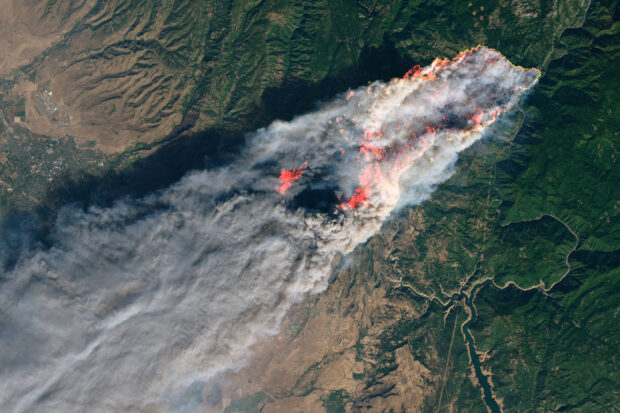Paying out more than twice as much in claims and expenses as collected in premiums in both 2017 and 2018, California homeowners insurers are still feeling the impact in 2023, according to the Insurance Information Institute (Triple-I).
“Insurers have earned healthy underwriting profits on their homeowners insurance business in all but two of the 10 years between 2013 and 2022,” states Triple-I’s just-released Issues Brief, “Proposition 103 and California’s Risk Crisis”. “However, the claims and expenses paid in 2017 and 2018—due largely to wildfire-related losses—were so extreme that the average combined ratio for the period was 108.1.”
A 108.1 ratio equates to $1.08 being paid in claims and expenses for every dollar collected in premiums within that timeframe (2013-2022).
The combined ratio for California homeowners insurers stood at 241.9 in 2017 and 213.4 in 2018, the Triple-I Issues Brief noted, citing AM Best data.
“To accurately underwrite and price coverage, insurers must be able to set premium rates prospectively,” the Issues Brief stated, “One or two years that include major catastrophes can wipe out several years of underwriting profits—thereby contributing to the depletion of policyholder surplus if rates are not raised.”
Unlike most states homeowners insurers in California had been unable to price risk based on forecasts of probability and instead had to rely on historical data alone, “in accordance with the regulations adopted after voters approved Proposition 103 in 1988.”
Policyholder surplus, the amount of money remaining after an insurer’s liabilities are subtracted from its assets, acts as a financial cushion beyond reserves, “protecting policyholders against an unexpected or catastrophic situation.”
Yesterday, however, an announcement by the state insurance commissioner highlighted a new regulatory plan that will allow homeowners insurers in the state to use predictive modeling, in addition to historical data, to adjust rates.
The three costliest wildfires in U.S. insurance history occurred in California in 2017 (Tubbs Fire) and 2018 (Camp and Woolsey Fires), according to the Triple-I.
Since 2018, California has sustained the five largest wildfires (by acres burned) in its history, though none matched the three above in terms of cost.
“With fewer private insurance options available, more Californians are resorting to the state’s FAIR [Fair Access to Insurance Requirements] plan, which offers less coverage for a higher premium,” the Issues Brief added.
“This is a large and potentially profitable market in which insurers want to do business,” the Triple-I Issues Brief said. “To make that possible in light of ongoing wildfire trends—as well as events like early 2023’s anomalous rains and, more recently, Hurricane Hilary—the state needs to continue making investments that reduce risk. It also needs to update its regulatory regime to allow accurate, prospective pricing.”
Photo: 2018 Camp Fire. NASA Earth Observatory image by Joshua Stevens, using Landsat data from the U.S. Geological Survey





















 Why Insurance Telematics Integrations Fail
Why Insurance Telematics Integrations Fail  A Practical Blueprint: The Five Plays of an Innovation Culture
A Practical Blueprint: The Five Plays of an Innovation Culture  Examining 5 Key Factors Fueling MGA Growth—and Emerging Challenges Ahead
Examining 5 Key Factors Fueling MGA Growth—and Emerging Challenges Ahead  The Hardest Part of Innovation in Insurance Isn’t Technology; It’s Culture
The Hardest Part of Innovation in Insurance Isn’t Technology; It’s Culture 



